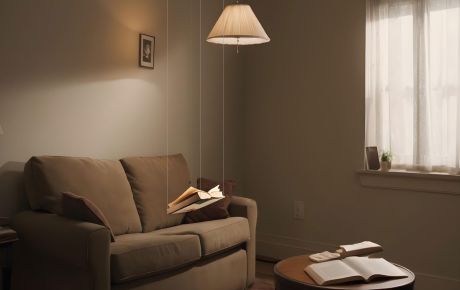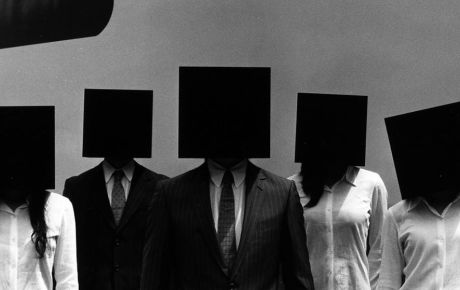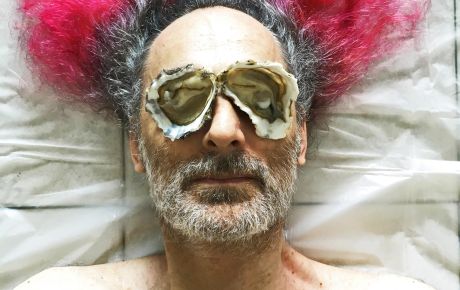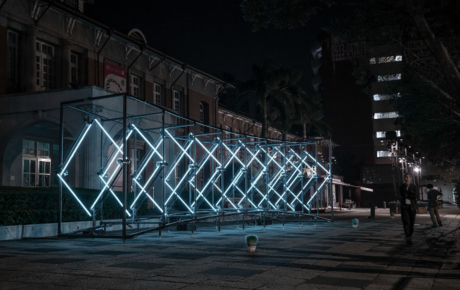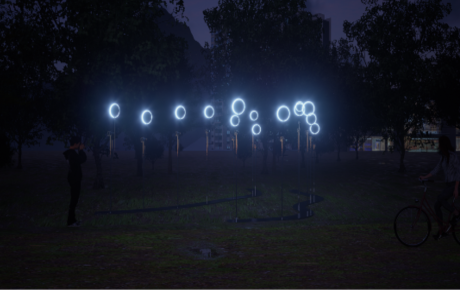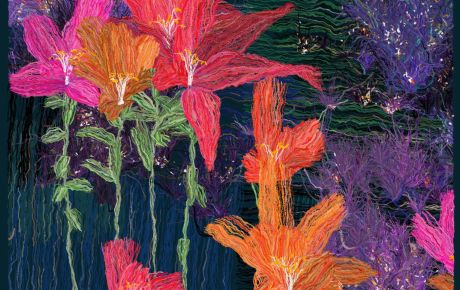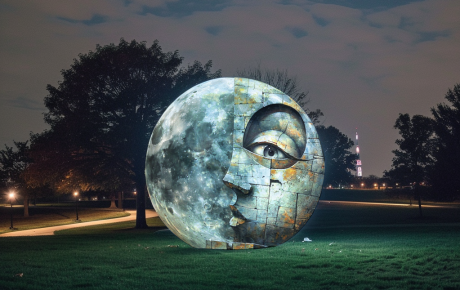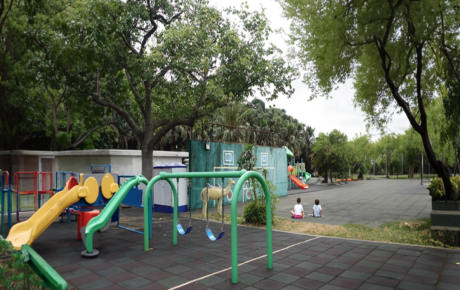Humberside
This work explores queer futurism in art. Can making and performing be a speculative vision of queer reproduction? Bringing together alternative forms of family and kinship between queer and feminist people and the production of art challenging hegemony. Working with sculpture, performance and AI animation the ‘birthed’ artwork is brought to life. AI generative text responds and guides the work through responsive storytelling.
VIEW MOREAcoustic Array
"Aonic Array" consists of multiple transparent acrylic tubes suspended in the air. Precisely controlled by pneumatic solenoid valves, these tubes produce resonant sounds when air is expelled and echoes within them. Beginning with his 2007 work "Sound.of.bottles," WANG Chung-Kun has been exploring the principle of air vibration to create a variety of sound installations, including "Kong - Qi," "beTube," and "Horns." Through mechanical and digital control, he manipulates air currents to generate sounds that are both familiar and strange, evoking a sense of the future.
VIEW MORE”Stance Poker”
The "difference in stance" between people in communication is a cause of stress and distress.
For example, the following problems. People in different positions attack each other using language that includes harassment. Social tendency for minority opinions to be drowned out by the majority, Physical limitations prevent them from communicating with others as they would like.
On the other hand, in the ever-evolving human enhancement technology, avatars are about to develop into a transformative technology that can not only solve these personal stresses and worries, but also turn the social tide.
We have developed a system that combines avatars and AI to control appearance, voice pitch, inflection, and phrasing in real time, allowing for stance manipulation.
Our question is: Can AI be used to solve the problems caused by this difference in stance? Is the solution appropriate?
We aim to determine how extensively visitors accept or reject, and embrace or disregard this technology.The experience of the three pieces of work gives the user a sense that mental stress can be controlled. In addition, the user can see stereotype of himself/herself as determined by the AI based on the user's behavior. This makes the user aware of his/her own stance, and we are convinced that the sharing of individual "stance" among people may direct the flow of the world.
Meaning
Language covers all kinds of values and merits and becomes the carrier of culture, in which pervades thoughts and emotions, perceptions and concepts. When AI encounters with humans, it can also be regarded as a cross-domain communication.
This work starts from language. In the Q&A session between AI and human beings, the AI speaks in human language, while the humans speak in program codes, and is presented with dual-channel video. The sound of keyboard inputting code and the sounds of dancers’ footsteps interpreting AI language form a more primitive and fundamental intimate conversation between man and machine.
As AI emerges, humans' reliance on technology deepens, making digital life a part of daily existence. Beyond the well-known ChatGPT, numerous AI software aim to provide companionship, attracting a wide user base. AI learns about users' values through interactions and responds accordingly. Under the gaze of "AI," the dancers’ bodies, covered in code, reconstruct the materiality of the real world. Under the gaze of "humans," databases transform into seemingly real and beautiful worlds.
In this collaborative text with AI, the work explores the dialectical relationship between humans and AI from three perspectives: "sound," "body," and "language." It re-examines the boundaries between technology and humanity, reality and virtuality. This dialogue is not only a fusion of technology and art but also a profound contemplation of the future coexistence of humans and machines.
Director|Tzu Ting HUANG
Producer|Tsai Lun TSAI
Choreographer for Real Dancer|Hsiao Hsuan HUANG
Choreographer for Virtual Dancer|Ling Jun HUANG
Real Dancer|Hsiao Hsuan HUANG
Virtual Dancer|Ling Jun HUANG
VJ|Yu Wei CHEN
Composer|Bo Yuan WANG
Voice Actor|Cassie、ChatGPT
Director of Photography|Kun Ho CHEN, Chun Kai HUANG
Gaffer|Jimmy HUANG
Best Boy|Hung Nien
Editor|Tzu Ting HUANG
Colorist|Jimmy HUANG
Sound Mixer|Bo Yuan WANG
Animator|Wonder Studio
Still Photographor|Chun Kai HUANG, Yi Hsuan LO
Memory Encoder
By the combination of audiovisual and the generation techniques of interaction AI to observe the collective life’s experience. The artwork “Memory Encoder” considers saving the fragments of life experiences into an consciousness database, the owner of it will initiative update, in order to reconstruct the individual experience from the artwork. Through the calculation of diffusion models in the artwork, generate the sight of third party perspective, and displace the variety of emotional experiences, convey the artwork creating the realistic by imitating the community.
Thinking is like a holographic principle, our experience and perception is the projection of collective consciousness. Each perception experience likewise each AI data node, the artwork acts as the bridge in connecting the individual to the collective database, to use the experience data projected a portion of perspective in terms of generate, convert, dynamic and fuse. Through the updating of joyful experience pictures into the artwork from the audiences, the artwork will be viewed as a collection of consciousness. The connection of audiences with the artwork also illustrates the AI itself and the collective construct the mode of joint manufacturing by sharing data.
The data model can be calculated by AI shows as a singularity. Save and compress the collective experiences and memories, convert to the projection of the collective consciousness, these are able to exchange the pathway of evolution in civilization. Therefore, the artwork “Memory Encoder” is here to mention the possibility of evolution and perspective.
ART: IVF-ET 2.0 Posthuman, Domestication, and the Technological Future
"Human beings think that they have domesticated technology; however, technology is also domesticating us."
Under the increasing impact of scientific and technological development, if one day we were no longer the main authority of the society, but passively became the nutrients of technology, what kind of future will mankind face?
When observing the emergence of the information fragmentation era, we will find that people have less ability to filter information and artificial intelligence has emerged in large numbers. We choose to feed AI and train it to become a tool for mankind, as if AI is the product of the integration of technology and human being.
Facing this “post-human anxiety” caused by this phenomenon, it is the creator’s hope that through her artworks, the physical field will be treated as the matrix of technology, to present society's collective anxiety about technology through immersive projection and AR interaction.
Change of Posture
Part of the difficulty in interacting with people from different culture, color, or religion is due to incomprehension and prejudice. When we extend this problem to artificial intelligence, it becomes even more complex. Will we project our biases onto artificial intelligence, refusing to work with or interact with it because it doesn’t think the same way we do?
VIEW MOREStarts Running When You Come
If an AI lives in the space next to you, how would it behave? When you come it starts running, when you leave it rests. This is a real-time generative work that uses accumulated human movement data to simulate a human-like creature living in a procedural space.
VIEW MOREEmpty Shells: The Human Body, and the Digital Space
With this project I am investigating the human body in digital, and virtual space, the acceleration of AI’s technology, and the repercussion of such digital turn. What is it that makes a human body tangible in the realm of binary numbers? How is the body de-constructed and re-constructed according to a mathematical scheme? How is space perceived, imagined, navigated? And lastly, what is the relationship between the digital human body, digital space, and generative AI? Can we still call a body human and a space tactile when both are unreal?
The current project focuses on digital maps, in direct dialogue with the contemporary discourse on AI: maps of the body, maps of space, maps of time, maps of the physical and the virtual. Through an extensive editing and processing of audiovisual footage, this intermedia installation aims to question the perception of reality, and by contiguity, what is perceived as surreal, alien, virtual, non-human, artificial, perhaps liminal.
Re-Channels: AI
As a carrier of information, technology allows people to get rid of physical restrictions through this complex network system - all of this is like a dream. What you need to do is to lightly touch the screen or click the mouse to constantly switch between time and space through windows and drift to more distant countries only with consciousness.
"Channels" explores the boundaries between reality and virtual-reality between "technology" and "dreams" through several huge and ever-changing boxes, in which countless arrangements and combinations keep switching to make it difficult for the audience to distinguish the time and space they are in.
The current exhibition, "Re-Channels: AI", attempts to probe deeper boundaries of consciousness through dialogue and questioning with AI. In this process, AI continuously learns and produces digital information, while the artwork instantly deconstructs the generated content, transforming it into real-time dynamic signals. This interaction allows the artwork to pose profound questions about the ever-changing future.
Infinite Panorama
Infinite Panorama
employs AI-generated music, pre-recording and processing these compositions to transform them into visual soundscapes continuously playing within the space. This creates an infinitely extending, never-repeating auditory experience. The installation consists of multiple motor modules, each unit comprising two illuminated "light rings" and a "tuning pipe." As the rings rotate, they strike the tuning pipe, producing sound.
The piece centers around the major9 tonality, using precise mechanical and programmatic control to simulate the organic rhythms and order of nature through sound and light. Multiple light sources weave complex geometric visuals, and the resonant notes from the tuning pipes create a dynamic interplay of sound, akin to the silence of nature, reflecting random combinations and the unknown.
In this endless flow of sound, viewers will experience an illusion of time and space, as if they are immersed in an eternal and ever-changing sonic universe.
The Soul Of Flowers
"The Soul of Flowers", in life we always encounter some beautiful people and things. Even if the fate meant to fade away in the end and they disappear in the torrent of time and space, they live forever in the vast wilderness of our dreams and become the Impressionists that cast romantic thought on the issues of existence. They intend to adopt rational brushstrokes to depict the souls that were beautified and evolved in memory.
Compared to the short passage of the Universe, life withers so quickly. In the colored pencil flowers grown from the seeds of generative algorithms, the simulation of physical particles and digital calculations are applied with the intention to draw on the style of traditional Impressionism to create eternal flowers of life and soul.
Who Can Tell Me What the Moon Looks Like
"Human's understanding of the moon is still very limited."
Restrained by the position of the earth and the rotation and revolution of the moon, we can only get a glimpse of one side of the moon, the so-called "near side of the moon." Even the signals of electronic instruments used in scientific research or space exploration cannot completely present the full picture of the moon, but rather provide limited images and information of the moon.
Nowadays, as the era of AI technology comes, is it possible for artificial intelligence, which possesses the symbolic meaning of omniscience and omnipotence to break through these limitations and reveal the true face of the moon?
Beautiful Scenery
In the past, photography has been viewed as a documentary medium capable of capturing images of the real world as proof of actual existence. However, with the vigorous development of artificial intelligence (AI) technology, we live in an era of information explosion. We face a lot of images and information on daily base. How do we distinguish between truth and falsehood?
The artwork "Beautiful Scenery" starts from a 4×6 photo, generative coloring technology is applied to expand the boundaries of the photo. Then the continuously generated results is further projected in the exhibition room. When using artificial intelligence to quickly fill the imaginative desire, can it expand and generate infinitely? Is it possible to continuously produce another beautiful scenery as imagined in the heart?



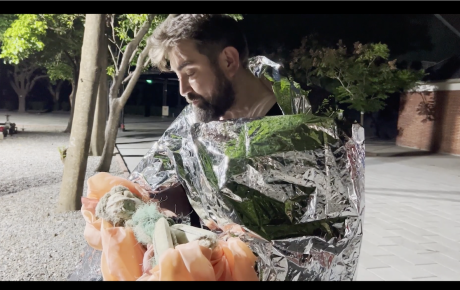
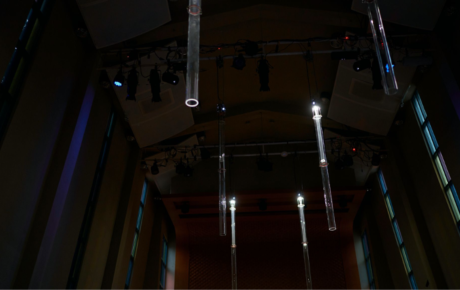
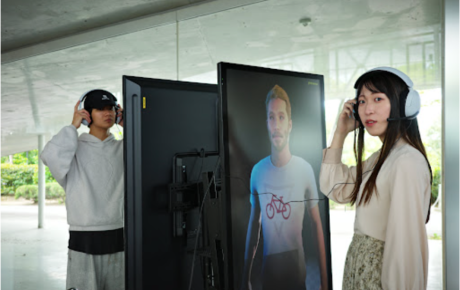
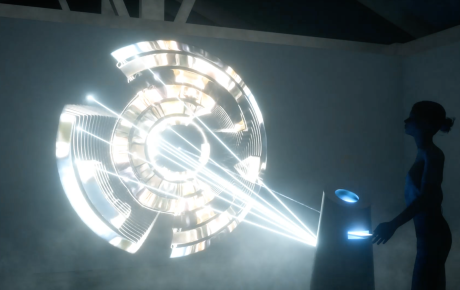
__24I2083Zww.png)
